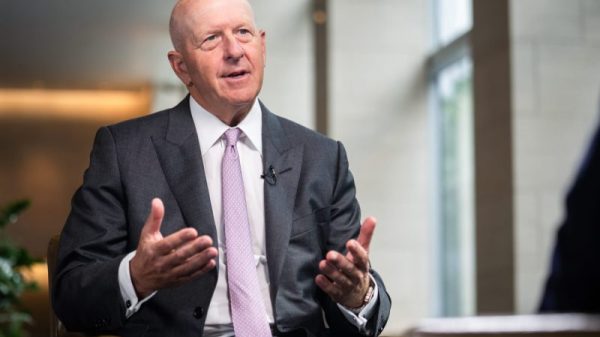Customers have come to expect when they order something online, it arrives in two days or less. But with increasing adverse weather events like Houston’s heatwaves, Florida’s hurricanes and other extreme storms, it’s getting harder to ensure fast delivery.
Many logistics companies have warned about shipping delays due to extreme weather. Weather-related supply chain disruptions will cost the industry an estimated $100 billion in 2024, according to Freight Waves. Freight solutions company Breakthrough, which focuses on sustainable transportation, conducted a survey of 500 shippers and carriers this year that revealed extreme weather was cited as the top transportation challenge.
“Shippers and carriers continue to face a myriad of disruptions,” Breakthrough chief operating officer Jenny Zanden said in a statement. “Last year, transportation professionals were focused on reducing costs as a means to overcome volatile diesel prices. This year, sustainability and climate-related disruptions are driving the need for fuel efficiency and changes to transportation strategy.”
The issues are affecting key global transportation conduits, such as the Panama Canal, where drought conditions have plagued shippers. But the issues are also increasing for the biggest retailers in the U.S. as they attempt to get delivered to customers and keep warehouses and stores stocked.
In March, an expected snowstorm hit the Sparks, Nevada. It led to the closure of Donner Pass, which many drivers use to traverse the northern Sierra mountain range. Walmart was unable to dispatch its grocery delivery from its Sparks center as a result. It turned to to predictive analytics and artificial intelligence to optimize last-mile strategies.
“We have now this technology at our hand, which allows us to make sure that we continue to serve those customers in the best possible way, run those scenarios, and have those recommendations ready so that we can start taking actions in a much quicker way, rather than waiting for the event to happen and then reacting,” said Walmart senior vice president Parvez Musani.
Walmart used its simulation platform built with artificial intelligence to create a digital twin of its entire network. Predictive modeling allows the company to see how to react to an adverse weather event, including if there are stores or warehouses in the weather path that need to be shut down and where those orders can be fulfilled. In the Sparks storm, Walmart identified 85 stores spread across Nevada, California and Oregon that could be quickly realigned to address the deliveries coming from the Sparks center. The system was able to find four specific distribution centers that could handle the workload, as well as offer alternate driving routes to get items to customers.
“Our goal is that by using technology and AI, we make it seamless for our customers where they don’t see the impact of some of this unforeseen event that happened, and we continue to serve the customers in that area,” Musani said. “We would reroute trucks where possible. We will realign warehouses that serve the stores in that area so that we can continue to bring the freight for our customers in the affected areas.”
Target adjusts its logistics network to address any delays created by storms or other adverse weather, so its supply chain can move faster. It also has adapted its models to make sure it stays stocked in areas where supplies may be in demand, pre-positioning inventory like food, water, batteries and other essential items in areas where predicted storms will hit. And rather than rely on large warehouses, it uses its stores as hubs, which helps it change delivery fulfillment quickly.
“We can quickly shift delivery origins across markets to ensure our stores are stocked,” said a Target spokesman. “And our various fulfillment options, including Target Circle 360 same-day delivery, Drive-up, and next-day delivery, provide multiple ways for guests to get products quickly.”
Rising temperatures affecting warehouse and deliveries have also become a serious issue for retailers, including Amazon. One union organizer in New Jersey showed temperatures as high as 92 degrees in July in areas where people lift heavy boxes, according to the Daily Beast. Other facilities in states like California have also complained about working conditions during heat waves in recent years.
In addition to closing warehouses in cases of extreme weather, Amazon is using algorithms to plan delivery worker routes. During 2023, it worked with partners to adjust routes based on heat by more than 96.9 million minutes to allow drivers to take additional breaks to hydrate and cool down. It also spent $59 million to insulate vans, including a rapid cooling system.
All delivery associates are also provided electrolyte powder, a cooler for each vehicle, a 64-ounce insulated tumbler, cooling bandanas, and sunscreen, with additional cooling mechanisms currently being tested. Its buildings provide heat mitigation above federal standards, including having most of its North American warehouses climate-controlled. It also requires mandatory additional indoor breaks for delivery workers in extremely cold temperatures, and invested $8.5 million in cold weather supplies for its delivery team.
A company spokesperson said that despite these adjustments, predictive analytics and strategizing have helped it maintain its shipping speeds. It set new shipping speed records for Prime delivery in the first three months of 2024, including more than two billion items arriving within two days globally.
“We’ve built our operations for agility, so even in the face of extreme weather, our supply chain modeling allows us to place in-demand products in non-impacted areas and monitor inventory levels for essential items, like bottled water, where people need them most,” said an Amazon spokesman.
While mitigating adverse weather during deliveries does add additional cost to the companies, in the end keeping customer loyalty by honoring shipping time promises pays off. It helps create a sustainable business, Musani said. With the aid of technology, that can be cheaper than ever.
“We want to have our cake and eat it too, in the sense that we want to create the fastest network possible for the customers, but do it at the lowest cost possible,” Musani said. “With our scale and using technology and using some of these AI-based platforms that are out there, it actually makes it easier, and it enables us to do all of that, to manage both the top line and the bottom line.”


































